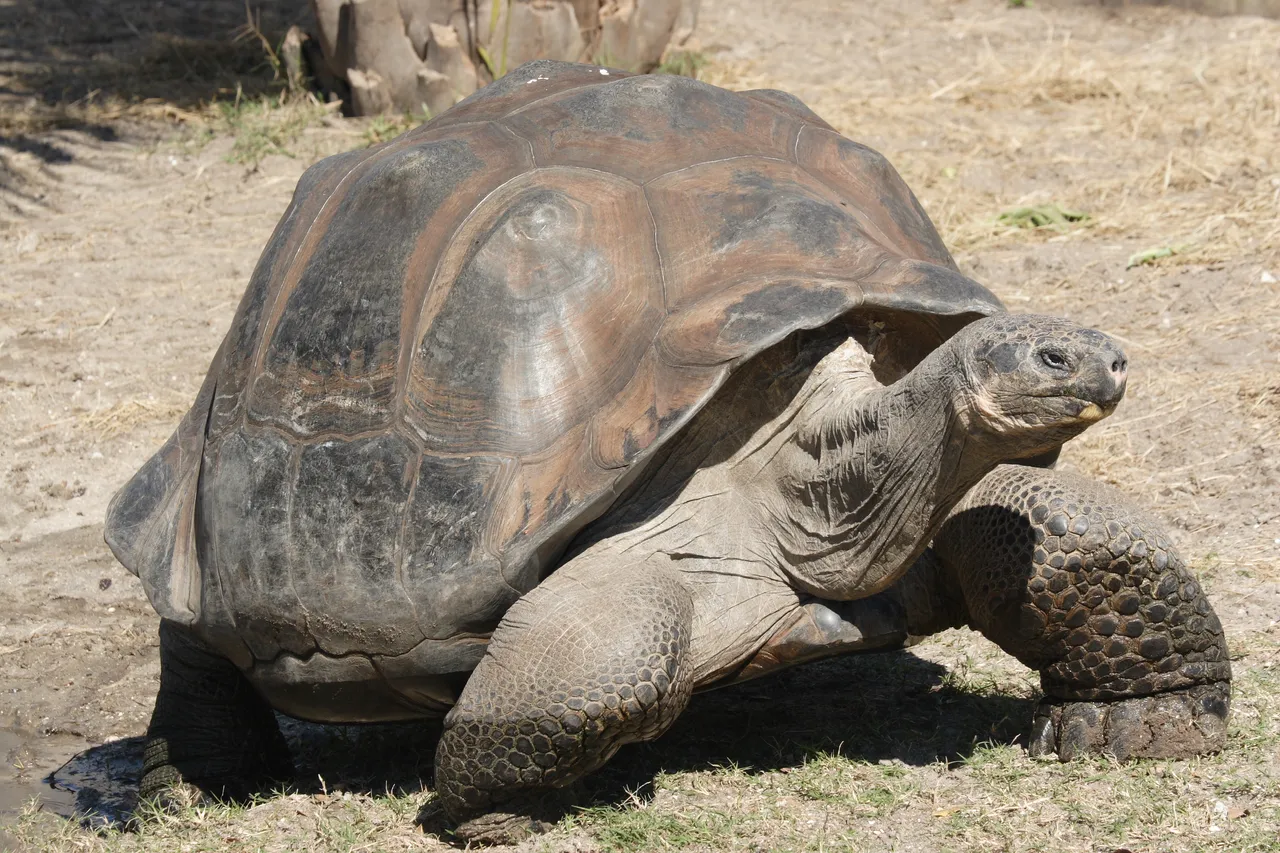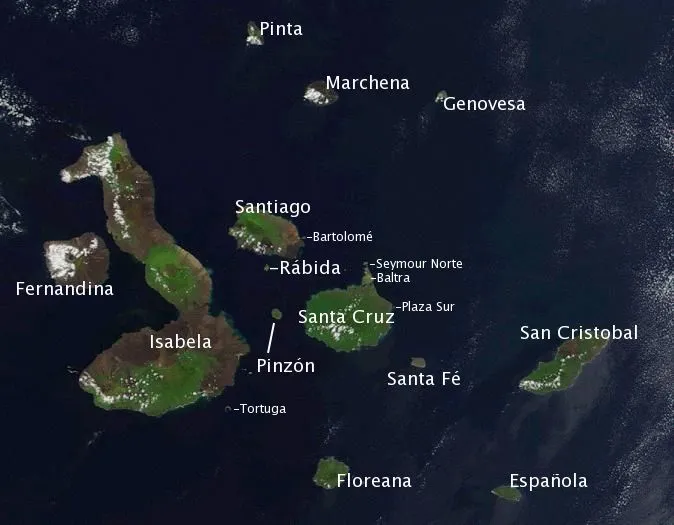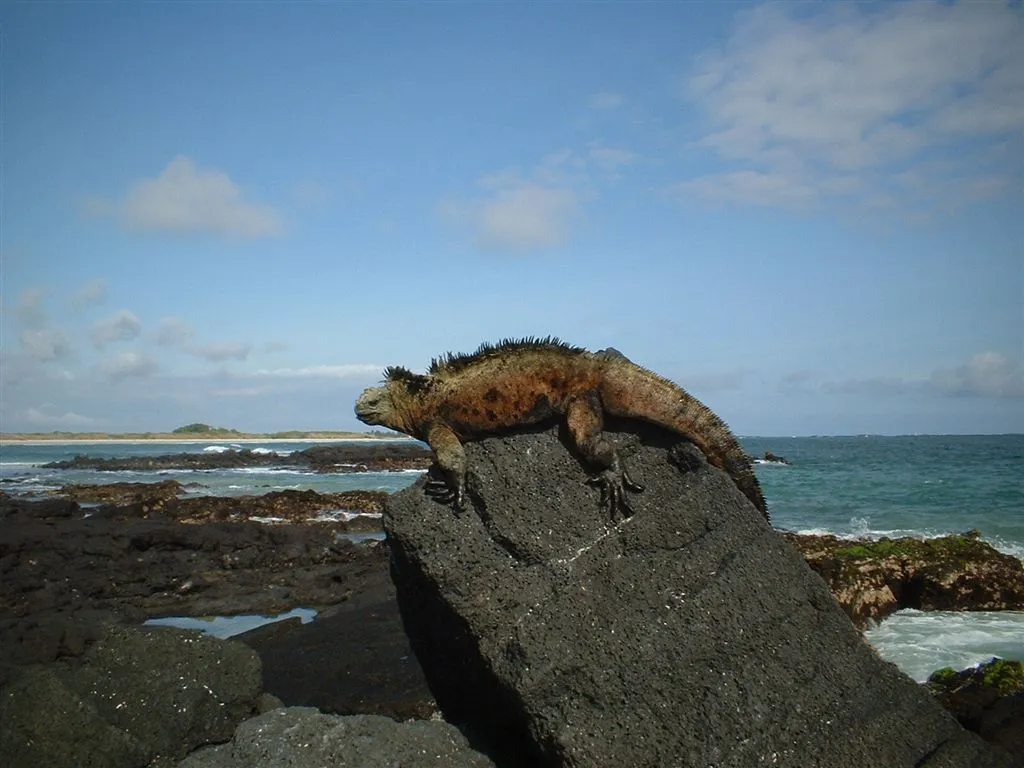The Galápagos Islands has a special place in the hearts of most ecologists and everyone that is interested in the biology science brances. For those unaware, these islands were the place where Charles Darwin observed how animals seemingly had adapted to their environment, which eventually lead to the evolutionary theory.

Darwins Arch, a landmark found just outside the Galápagos Islands. Image by refractor, posted with the Creative Commons Attribution 2.0 Generic license.
The Galápagos Islands were the origin for his brilliant theory for a good reason; they have a huge amount of endemic organisms - organisms that are only found on this one place, and not anywhere else. Isolated places such as islands often have a lot of endemic species compared to areas where the organisms can easily travel to and from, but the Galápagos Islands have even a much higher amount than most other islands.

A Galápagos tortoise, one of the endemic species on the Galápagos Islands. Image by Matthew Field, posted with the Creative Commons Attribution-Share Alike 3.0 Unported license.
The group of islands are located about 1,000 kilometers off the coast of Ecuador, and are also owned by the same country. It became the first national park in Ecuador back in 1968, and was later also given status as a UNESCO World Heritage Site.
The national park covers 97 % of the islands’ land surface, and a huge marine reserve just outside the island is also protected. In total, over 138,000 square kilometers of marine ecosystems are protected by this marine sanctuary.
As you might expect, this type of protection means that the group of islands have gotten strict enforcements in place to prevent any loss of nature such as animals and plants. There are about 26,000 people who lives on the islands, and the entire national park has a strict limit as to how many people that can visit the park each year.

A satellite image of the islands. Image is Public Domain.
They authorities on the islands have also focused on providing the islands with renewable energy, and also banned all use of plastic bags. This was done to prevent plastic from ending up in the wild, or in the ocean, but sadly this did not really seem to matter all that much.
So far in 2018 over 22 tonnes (metric tons) of plastic have been cleaned from the coast
We would expect that there would not be a lot of plastic in the national park since the use of plastic bags is banned, and it is of course illegal to throw away plastic when visiting or living on the islands. Despite this, over 22 tonnes have been collected from the littered coast so far this year!
If anyone reads this in the future, the current date is only March 19th 2018, so we are only one quarter into the year.

A beach littered with plastic and other waste. Note; not the Galápagos islands. Image by U.S. Fish and Wildlife Service, posted as Public Domain.
According to the park, the plastic has reached the islands by using ocean currents. Some of the plastic even has origins in Asia, which shows how far a single piece of plastic can travel after it has ended up in the ocean.
Sadly this means that even remote places such as these islands will still experience all the problems because of pollution in other parts of the world, which again is a good argument why stopping plastic pollution must be a global effort, and not something a single country or area can solve by itself.
Why the conservationists on the islands are extremely good at picking up the plastic
The park rangers and conservationists on the island fear that the plastic that gets carried all the way from other continents might contain invasive species, such as small invertebrates or even smaller things such as foreign types of algae.

A Galápagos marine iguana, a species that could easily be disrupted if an invasive species enter its ecosystem. Image is Public Domain-
By removing the plastic waste as soon as possible, they minimize the chances of these potentially invasive species that are being carried by the plastic have a chance to establish a population on the islands. Even a single invasive species could totally destroy entire ecosystems on a pristine island such as one of the Galápagos islands, so it's really important to get rid of it as soon as possible.
While it's unfortunate that the islands get this much plastic, the government seem to do a really good job with cleaning it.
Thanks for reading
Thank you for checking out my post about the plastic waste that shows up on the pristine Galápagos Islands. I hope you enjoyed reading it.
About @valth
Hey, I'm @valth - the author of this post. I love to write about nature, biology, animals, nature conservation, ecology and other related branches of science, and I occasionally write about my life, about Steem or about random stuff as well. I'm trying my best to write at least one post every day, so make sure to give me a follow if you enjoy my content and want to see more of it.
Join the @valth community!
I love nothing more than to engage with my readers, so please join the @valth community in the comment section. You will definitely find more information about the topic, personal experiences, questions, and even opposing views down there, so don't miss out on learning more.
I always reward users who post good comments, so please take the opportunity to share your views and get a small upvote in exchange for it.